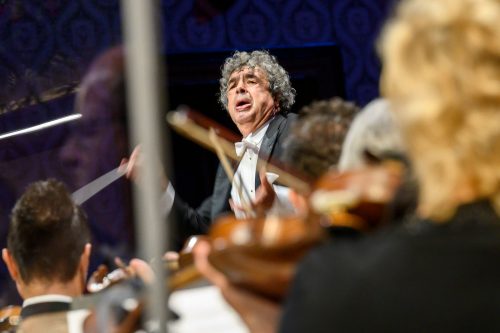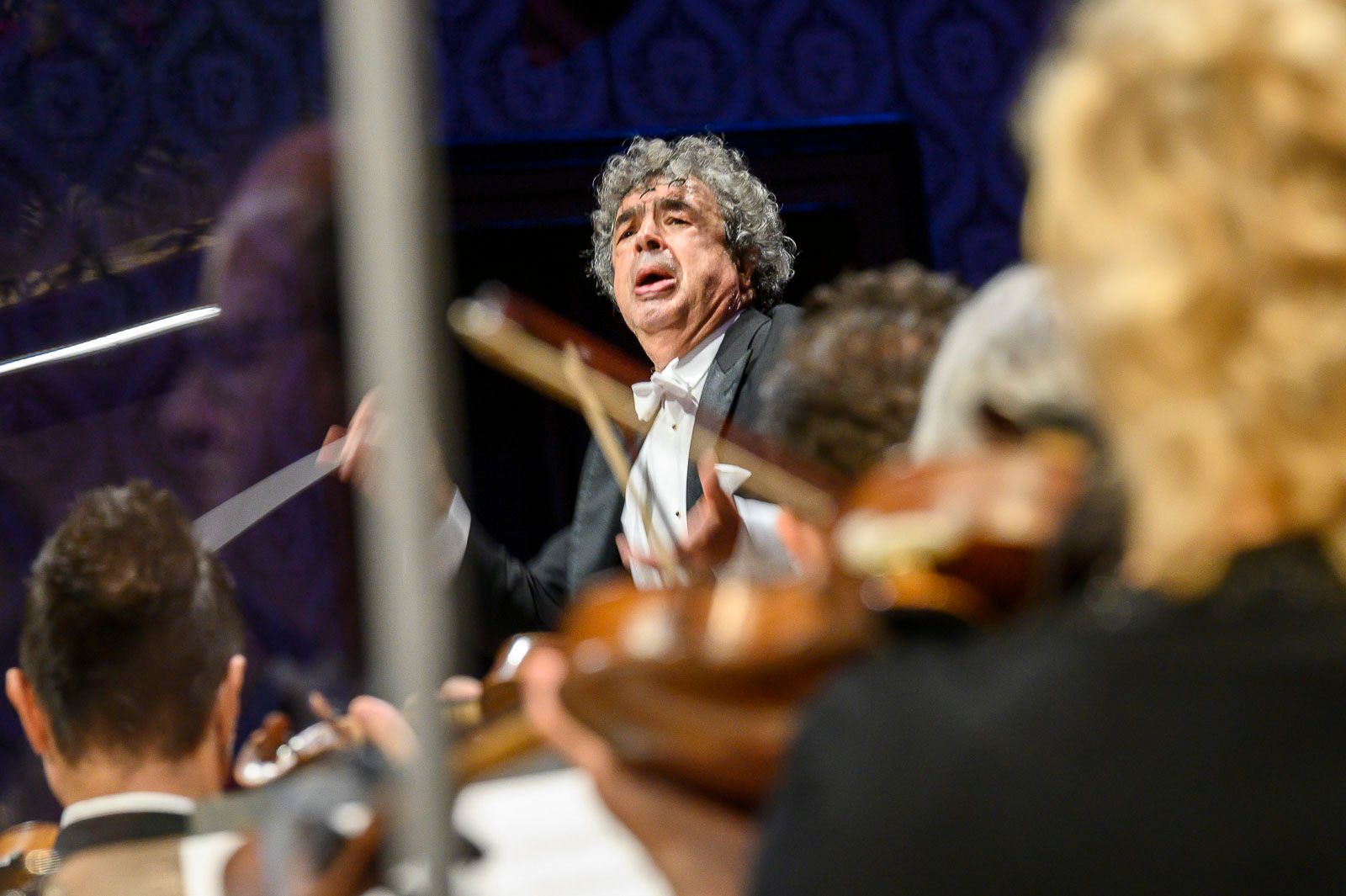 Czech Republic Velvet Revolution Concert: Smetana, Má vlast: Czech Philharmonic Orchestra / Semyon Bychkov (conductor). Livestreamed from Rudolfinum, Prague, 17.11.2020. (CC)
Czech Republic Velvet Revolution Concert: Smetana, Má vlast: Czech Philharmonic Orchestra / Semyon Bychkov (conductor). Livestreamed from Rudolfinum, Prague, 17.11.2020. (CC)

This performance of Smetana’s Má vlast celebrated the 31st anniversary of the Velvet Revolution and was also billed as a ‘Concert for Freedom and Democracy’. There is a tradition of performing Má vlast as the opening work of the Prague Spring Festival on 12 May (the anniversary of Smetana’s death). The Czech Philharmonic’s 1990 performance of this piece under Rafael Kubelík is seen as a defining point in Czech musical history and so this performance commemorates both the 30th anniversary of Kubelík’s concert in Prague’s Old Town Square, as well as Czechoslovakia’s first free elections (after the Velvet Revolution) in June 1990. Bychkov – who watched Kubelík’s Má vlast – took inspiration from it and has performed the piece in many, many places, but only conducted it for the first time with the Czech Philharmonic in October last year.
On film, the Czech Philharmonic’s CEO, David Mareček introduced the history of the work with the orchestra: it was performed at their first radio broadcast, in 1925, and four years later it was the first work they recorded in vinyl. A significant performance was from Václav Talich in 1939 at the National Theatre, a ‘demonstration of national pride’ that concluded with the Czech National Anthem.
Broadcast in partnership with the bank Česká Špořitelna and car maker Škoda, this concert seemed confirmation of the rapport enjoyed between Bychkov and the Czech Philharmonic; their Tchaikovsky set on Decca has already created a justified stir in the industry, and one looks forward to many more recordings from this combination.
Smetana’s Má vlast comprises six symphonic poems composed between 1874 and 1879. The first,’Vyšehrad’ (literally ‘The High Castle’, the seat of the earliest Czech kings), began with a gorgeous harp opening from Jana Boušková and Barbara Pazourová, and superbly balanced chorales from wind and brass; it was the sheer radiance of the string retort that made me gasp. Bychkov is renowned for his perfectionist rehearsal style, something that enabled this performance to radiate warmth and fervour as well as deliver the most perfectly delineated textures at climaxes. Strings, too, were preternaturally together in mass ascent; and when the music calmed itself down to the most threadbare textures, the effect was magical. When the four-note motif representing the castle is heard in the movement’s latter stages tutti, the effect was awesome in the true meaning of the word; just as powerful was the quiet close, itself heralding ‘Vltava’. The most famous of the symphonic poems, Bychkov and his players allowed us to hear the score anew, flutes at a pace that was positively scampering as they chased each other at the opening. Baying, Czech-rustic hunting horns met the glorious flow of the river. Bychkov led the piece as an example of musical storytelling, riveting at each and every twist and turn.
The third symphonic poem, ‘Šárka’, is named after a mythical female warrior, perhaps a little Boudica-like in her strength, here involved in a tale of seduction and murder. Bychkov painted the intensity of the emotions in garish red, that disruptive bassoon note heard in all of its glory.
‘Z českých luhû a hájû’ (From Bohemia’s Woods and Fields) took on an extraordinary grandeur under Bychkov’s baton, enabling huge contrast to the silvery fugal writing for strings. Even more impressive was Bychkov’s large-scale harmonic awareness in this movement, the way the music opened out then became interior, and even stormy, again.
Taking its theme from a Hussite hymn, ‘Tábor’ refers to the South Bohemian city that was founded by the Hussites. Smetana’s music is dark and fragmented, the still heart of the cycle that rises to a blaze of brass, repeated to mark the onset of the final symphonic poem, ‘Blaník’. The title refers to a mountain that contains, according to legend, a huge army of knights led by St Wenceslas that will rise when the Czech people are in their direst need. The woodwind in this finale were exquisite, like a Smetana version of Harmoniemusik.
Nice to recognise some of the faces of the players from the Czech Philharmonic’s residency at the Royal Academy of Music earlier in the year; expert camera work throughout led us nicely through the sonic labyrinth. A phenomenal performance of great dignity and strength.
Colin Clarke
For more about the Czech Philharmonic and how to see this concert (that is available until 24 November) click here.
